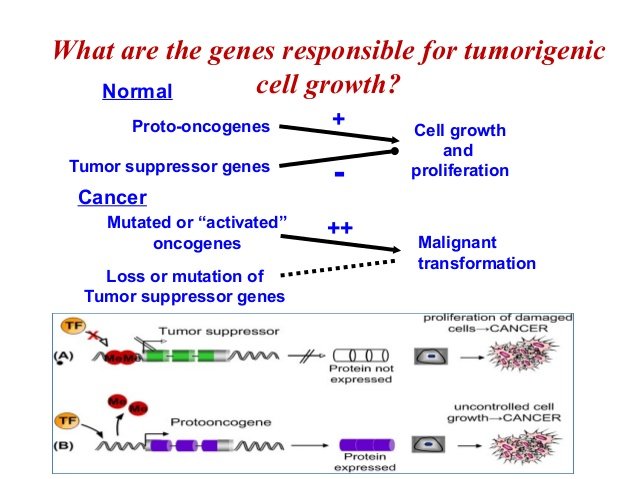Why do we get cancer?
Cancer occurs when a somatic cell of the body acquires a set of mutations that cause that cell to acquire a selective advantage relative to other cells. Cancer is therefore an example of selfish evolution. From an evolutionary perspective, the role of somatic cells is to optimise the germ cells of an individual and pass on these cells to their offspring. Cancer cells have abandoned this role, and now act to produce further copies of themselves. The evolution of cancer is usually self-destructive, as the continued growth and survival of the cancer is not compatible with continued survival of the host, as the cancer relies on the host for nutrients and support. Accordingly, cancer can usually be considered an evolutionary dead end.
How do mutations arise?
Humans have about 10^13 cells, and a mutation in just one of these cells can cause cancer. Mutations are caused by DNA damage. This damage can be categorised in two main ways, exogenous (an external cause) or endogenous (an internal cause). Some examples of exogenous causes of DNA damage are UV rays and ionising radiation. The nature of aerobic metabolism within cells generates oxidative species that can leak from mitochondria, which can enter the nucleus and damage DNA (https://steemit.com/science/@ovij/what-is-dna-why-do-we-need-it). These oxidative species make up part of endogenous DNA damage.
Types of Mutation
Somatic mutations can involve:
• Single base substitutions (e.g. G becomes a T)
• Small insertions and deletions (e.g. single base is lost such that sequence CAAAAC becomes CAAAC due to deletion of an A)
• Large-scale structural mutations; these involve double strand DNA breaks and can lead to translocations, inversions, deletions or duplications. Structural mutations can lead to gains or losses of large chunks of chromosome.
• Copy number mutations; these are observed as gains or losses of a whole chromosome or part of a chromosome.

All somatic cells will carry mutations, simply due to the vast number of cells and the error rate of DNA replication, as well as due to the damage events that are discussed above. However, many these mutations have no effect on the cell (mainly to the high percentage of DNA that is ‘junk’) and can be thought of as silent. These mutations are described as passenger mutations. Despite this, some mutations do offer a selective advantage to the cell in terms of proliferation and survival. These mutations are known as driver mutations. Most cancers have between 0-12 driver mutations, which are established by comparing cancer genomes of different patients and searching for mutations that occur more frequently than by chance alone.
Genes that harbour driver mutations are known as cancer genes, and to date there are 616 known. Cancer genes can be classified as either tumour suppressor genes or oncogenes. I like to think of these two genes as being in balance to prevent cancer from arising. Tumour suppressor genes cause effects within a cell to prevent proliferation, while oncogenes have the opposite effect. Thus, a mutation of just one of the oncogenes is sufficient to cause cancer (as proliferation will be increased), while both tumour suppressor genes need to be lost in order to allow a cancer to progress (as a there will be no termination of proliferation). This is summarised in the image below.

Cancer is therefore caused by DNA damage leading to an increase in oncogene activation or a decrease in tumour suppressor gene activation. Mutation of just one oncogene or tumour suppressor gene may not always be sufficient to cause cancer in all cases. Perhaps increased activation of tumour suppressor genes could hold the key to treatment of cancers in the future.
References:
Image 1:https://socratic.org/questions/how-do-dna-mutations-occur
Image 2:https://www.slideshare.net/PoojaGoswami5/14-march-seminar
very good post brief explanation about cancer